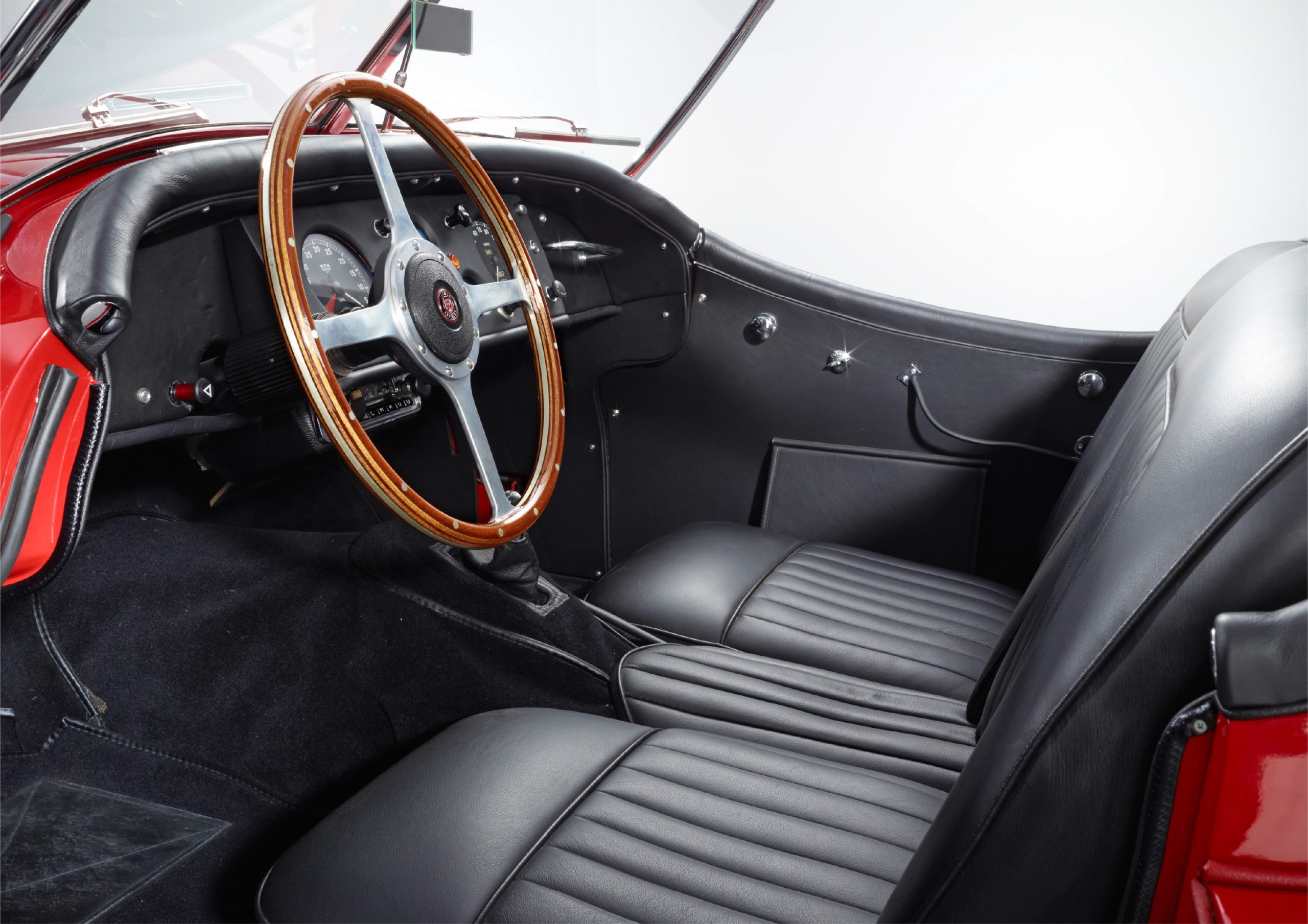After the 2nd World War, in 1945, Donald Mitchell Healey founded the Donald Healey Motor Company. After various development works (Nash Healey etc.) and victories in smaller races, the Healey 100 became the star of a British motor show at London’s Earls Court. This car was placed by Donald Healey between the already older MG T and the more modern Jaguar XK in terms of both performance (100 miles per hour) and price, and was aimed at the booming American roadster market. BMC president Leonard Lord (1896-1967) became aware of Healey’s new model; Lord and Healey agree to work together under the BMC umbrella on the eve of the public presentation of the Healey 100 (1952).
After the 2nd World War, in 1945, Donald Mitchell Healey founded the Donald Healey Motor Company. After various development works (Nash Healey etc.) and victories in smaller races, the Healey 100 became the star of a British motor show at London’s Earls Court. This car was placed by Donald Healey between the already older MG T and the more modern Jaguar XK in terms of both performance (100 miles per hour) and price, and was aimed at the booming American roadster market. BMC president Leonard Lord (1896-1967) became aware of Healey’s new model; Lord and Healey agree to work together under the BMC umbrella on the eve of the public presentation of the Healey 100 (1952).
The Austin-Healey 3000 is an Austin-Healey roadster built by BMC from 1959 to 1967. Its history 3000 began in 1952 at the London Motor Show with the Austin Healey 100/4. Based on it, the 100/6 was created four years later and finally the Mark I – the first version of the classic Healey – in 1959. The vehicle became known as the “Big Healey.” The body was produced at Jensen Motors, and the cars were assembled at BMC in Abington.
Despite the name change, the changes between the Austin Healey 3000 and the 100/6 were minor. The displacement increased to 2912 cc. The engine was equipped with a twin SU carburetor. Girling disc brakes on the front axle provided adequate deceleration. Wheelbase and bodywork, however, remained unchanged. There were only two versions, the 2+2 and a two-seater. Spoked wheels, transmission with overdrive, tinted windshield, a heater, adjustable steering column, a hardtop and two-tone paint were the available optional extras. Initially, the 6-cylinder produced 103 horsepower, later 118, and various special models even up to 150 horsepower.
During its production period the 3000 won many European rallies and even today it is often used in classic car rallies. The 3000 was Austin-Healey’s most luxurious roadster. Compared to its predecessor, the 3000 received a folding top and retractable discs with a crank mechanism instead of plug-in discs.
Production was discontinued in 1968 in favor of the Triumph TR5. Reason for this may have been the stricter U.S. emissions standards. In eight production years, 42,926 units were built in three model generations.



